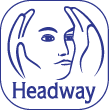Music Group clients perform LIVEClients Steve, Martyn, Tim, Sheena and Jodie performed live at a concert in October alongside the Raunds & Kettering Ukulele Orchestras, as well as two choirs and other musicians, raising funds for both Headway East Northants and the Cransley Hospice.
With support from facilitators Freyja and Kate, the guys not only played drums, ukuleles and glockenspiels, but also sang live to a packed-out hall – a nerve-wracking prospect for anyone, let alone someone managing a brain injury. We were bursting with pride, watching in the audience, and full of admiration too – clients conquered their nerves and simply took it all in their stride. Amazing stuff! |
Please help by making a donation |
